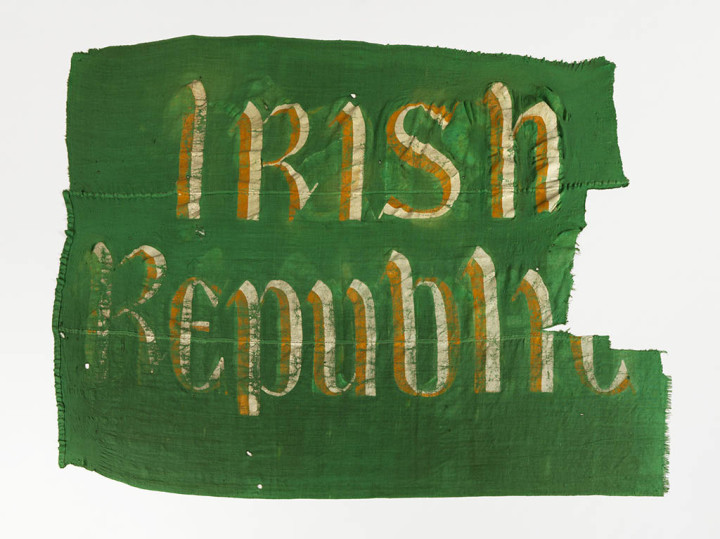


Richmond Barracks is delighted to welcome historian Donal Fallon to write a series of blog posts about the building and its rich history.
Today, Donal is taking a look at the surprising links between Argentina and Dublin.
When we think of the Irish Diaspora, certain places come to mind immediately. We think of Manchester – which had its own ‘Little Ireland’ district in the nineteenth century – or the enormity of Irish America, a community of tens of millions. Argentina does not immediately come to mind. A street name in Inchicore, included on our forthcoming Richmond Barracks to Kilmainham Walking Tour, is a reminder of the connections between Ireland and Argentina.
A statue in Dublin today commemorates Admiral Willie Brown, Mayo born man and founder of the Argentine Navy. Who could forget Ernesto ‘Che’ Guevara, born in Argentina but with strong links to the Lynch family of Galway, and whose father would famously say, “in my son’s veins flowed the blood of the Irish rebels.”
One Irishman who is largely forgotten though is the Offaly-born William Bulfin, who would become a hugely significant journalist in his lifetime, and who introduced organised hurling to Argentina and who even promoted the Gaelic League in the unlikely surroundings of Buenos Aires. His son, born in Argentina, would raise one of the flags over the General Post Office during the Easter Rising.
Argentina attracted Irish migrants as a place where land was relatively easy to acquire, and which was Catholic. A sheep farm in the Pampas was a long way from Offaly, but William Bulfin was just 23 years of age when he arrived in the country. Bulfin would return to Ireland in the early twentieth century and pen one of the classic travel memoirs of all time, Rambles in Éirinn, noting “how often during the cloudless dog days of the Pampas had I yearned for a cycling tour through Ireland.”
His son, Eamon Bulfin, was born in Argentina in 1892. He would spend much of his formative years in Ireland, educated at Patrick Pearse’s St. Enda’s School. He remembered curious times at the school, “When we started making munitions….we made shotgun ammunition and hand grenades.” Bulfin raised one of the flags over the General Post Office, seized by rebels on 24 April 1916.
He recalled:
"There were two flags on the Post Office. One was given to me. It was the ordinary Irish flag, green … and in white letters (inscribed) across the middle were the words “Irish Republic”. I can’t recollect who gave it to me, but I think it was Willie Pearse.
The thing I remember most clearly about its hoisting is that I had some kind of a hazy idea that the flag should be rolled up in some kind of a ball, so that when it would be hauled up, it would break out. As a matter of fact, I did it that way because it did open out in the proper manner when hoisted."
In the aftermath of rebellion, Eamon was first sent to the Frongoch internment camp in Wales, after which he was deported to Buenos Aires, and during the revolutionary period he served as a foreign representative for the new revolutionary Irish state in the country. He worked closely with Patrick Little, who was an Irish Representative to Argentina and South Africa during the war, Little recalling: “British influence, of course, was very strong, and they had great influence over some of the daily papers there. When we denounced the Treaty, we were accused by ‘La Nacion’ of being agitators. I suggested to Eamon Bulfin that as he was the soldier in the party, he should, according to Argentine custom, fight a duel with the editor, with sabres, but Eamon did not think that was in his official instructions!”
Eamon returned to Ireland and died in December 1968. While Bulfin Road is named in honour of Eamon, the Irish Volunteer, we should also remember his adventurous father, one of those Irish people who saw opportunity for a new life in Argentina and took it. Today, there are still hurling clubs established in the days of Willie Bulfin in Argentina in existence.
There are other revolutionary connections in the street names of the area – from James Connolly to Robert Emmet – and we look forward to exploring these with you on our Richmond Barracks to Kilmainham Walking Tour .
Donal Fallon is a historian, broadcaster and curator from Dublin. Formerly Historian in Residence to Dublin City Council, he is the author of numerous studies of twentieth century Dublin, including The Pillar: The Life and Afterlife of the Nelson Pillar (New Island, 2013). He produces the Three Castles Burning podcast and has contributed to publications including Jacobin, Dublin Historical Review, Saothar and The Irish Times. He is a graduate of Maynooth University, University College Dublin and the Ulster University, and lectures with the Lifelong Learning department of University College Dublin.
Posted 11 May 2020
Tagged with: News